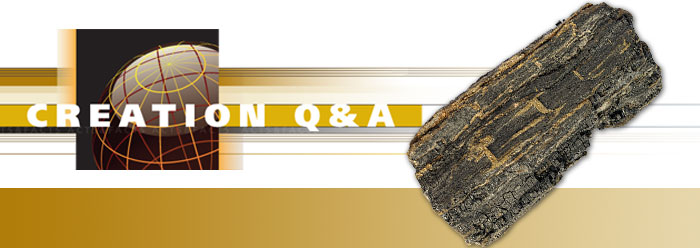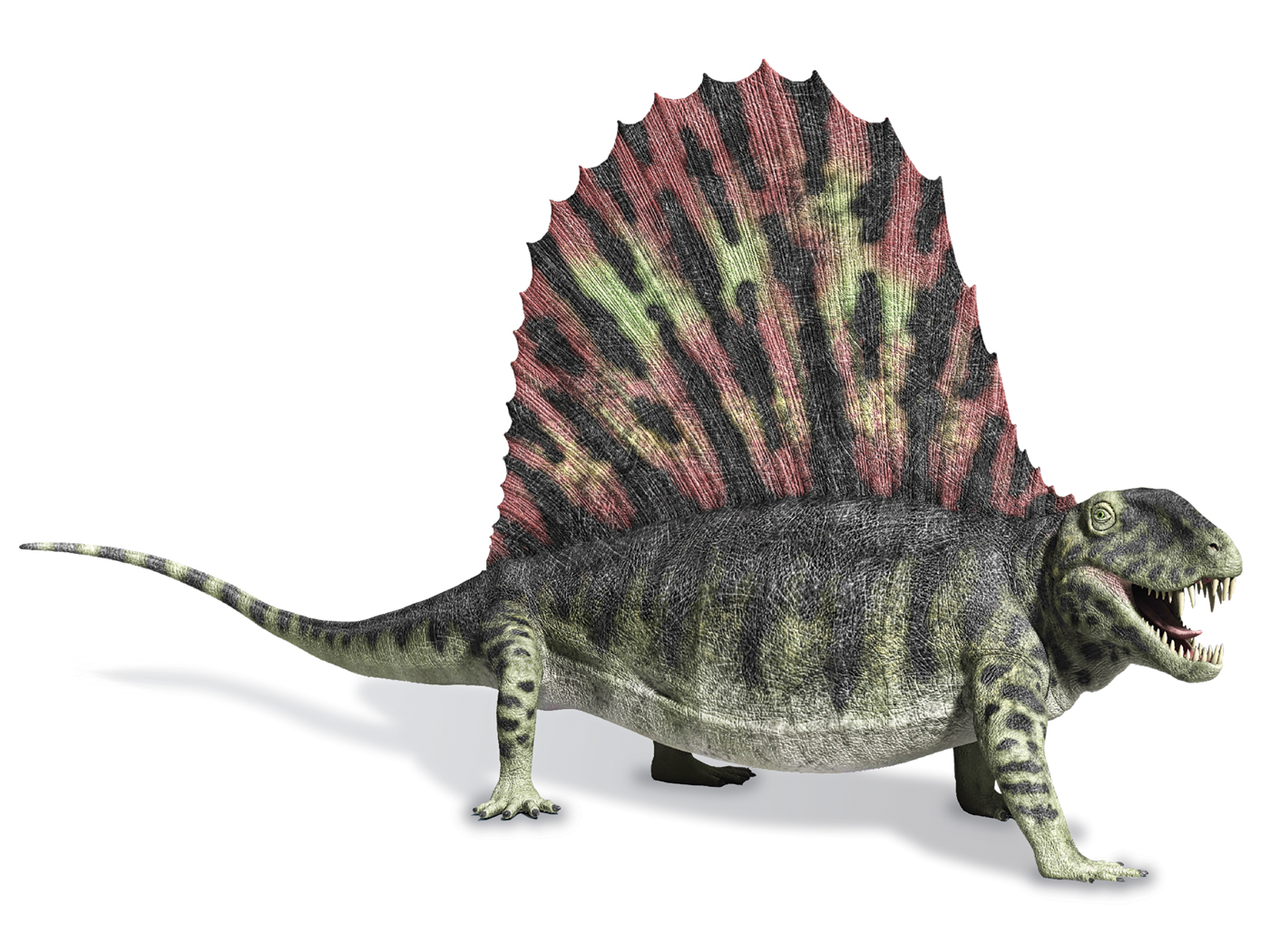Perhaps no other fossil discoveries have rocked the world of paleontology more than original organics like proteins in old bones. ICR helps curate a list of mainstream science publications that describe what’s inside these fossils: hemoglobin, chromosomes, whole cells, tissue scraps, and bone collagen. The number exceeds 120, making the presence of proteins and similar finds an increasingly common occurrence.1 So what’s the big deal?
Inevitable chemical reactions turn even the most resistant biological materials (or “biomaterials” for short) into dust in fewer than one million years under ideal conditions, whereas the fossils that contain them were supposedly deposited tens to hundreds of millions of years ago. Evolutionary workers strive to protect deep time from this chemistry. While the latest attempt describes how the front door to collagen longevity stands strong against destructive chemistry, it ignores a wide-open back door.
Publishing in ACS Central Science, MIT chemists used three different angles to describe collagen’s resistance to a particularly common chemical reaction with water molecules.2 First, they synthesized chemicals that mimic the three-dimensional structure of collagen, including its hydrogen bonding and electron-sharing attributes. They made three versions and tested how each behaved in water. Sure enough, the version most like collagen resisted water-based chemistry the longest.
Next, they used sophisticated software to model the complicated intermolecular interactions, the upshot being that once all three individually manufactured collagen strands wind around one another to form its three-stranded molecular rope, electron-sharing and hydrogen-bonding sequester otherwise chemically reactive features.
Last, they validated their computed chemical structures with X-ray crystallography. This technique snapshots the three-dimensional chemical structure of small molecules.
A key term in their report is the “Pauli Exclusion Principle.” This refers to the status of electrons in an atom or molecule. When more than one electron occupies the same orbital, or zone, one electron always differs from its partner in at least one aspect—usually its spin direction. When it comes to collagen, its collection of electrons comes pleasantly partnered, beautifully balanced, and, in short, too happy with themselves to want to react with outsiders. The MIT team ended up with an unprecedentedly detailed description of the tightly-bonded structure of bone collagen.
Then came the conclusion, which far overstepped the worthy results. The study authors wrote, “This discovery has implications for the stability of collagen, which is replete with n→π* [contented electron] interactions and has remained intact for (at least) hundreds of millions of years, exceeding the half-life of a peptide bond by a millionfold or more.”2
What implications? They don’t specify one.
What data did they collect to justify the conclusion that collagen has remained intact for hundreds of millions of years? None. They simply argued in a circle.
Since the fossil was supposedly buried for 200 million years, and since the fossil has collagen in it, therefore the collagen has been buried for 200 million years. But this exceeds the decay rate of peptide bonds as well as the measured decay rate of bone collagen under ideal conditions!
In the final analysis, this study may have done a great job at explaining the long-known fact that collagen is insoluble in water and why collagen lasts for thousands of years, for example in the form of skin parchments like the Dead Sea Scrolls, but that’s it. In other words, the study may suggest that all these intricate molecular arrangements explain the longevity we can observe and measure in collagen, but what experimental or computation result addresses the longevity that evolutionary time assumes in the face of experimental data?
Senior author Paul Raines told MIT News, “There’s no weak link, and that’s why I think it has survived.”3 But survived for how long? These experiments did not address that question. We need a decay rate study to address it, and those have already been performed.4–6 They come as close to “proof” as experimental science can that collagen—tough though it is—does not last a million years at reasonable temperatures.
Two culprits lurk at the core of the outlandish conclusion that collagen can last “a million or more” times longer than measured peptide bond decay rates. First, circular reasoning displaces science when researchers presume the conclusion that collagen has lasted tens of millions of years before even evaluating that conclusion. Second, while the Pauli Exclusion Principle surely accounts for collagen’s absence of “weak links” within its chain of amino acids, it does not apply to the ends of those chains—a topic of conspicuous absence from this study.
What lies at each end of a tightly woven molecular strand of collagen? What did the MIT researchers leapfrog? The fact that chemistry happens on collagen’s exposed ends, quite like fraying ropes.
The middle of the collagen rope is like a strong door that resists water chemistry, but its ends are like back doors where water and other molecules do chemistry. The strong doors keep collagen viable for thousands of years, but the back doors ensure collagen’s demise before one million years have elapsed—at least according to the science of decay.
Two clear points surface from this report. First, when it comes to evolutionary time, circular reasoning once again substitutes for good science.7 Last, even with the Pauli Exclusion Principle to ensure that the middle of collagen molecules resists water chemistry, chemical reactions still take place at their measured rates—rates that exclude millions of years.
References
- Thomas, B. and J. Tay. List of Biomaterial Fossil Papers. Google doc. Posted on docs.google.com, accessed September 11, 2024.
-
Yang, J. et al. 2024. Pauli Exclusion by n→π* Interactions: Implications for Paleobiology. ACS Central Science. https://doi.org/10.1021/acscentsci.4c009
71. - Trafton, A. MIT Chemists Explain Why Dinosaur Collagen May Have Survived for Millions of Years. MIT News. Posted on mit.edu September 4, 2024, accessed September 9, 2024.
- Collins, M. et al. 1995. A Basic Mathematical Simulation of the Chemical Degradation of Ancient Collagen. Journal of Archaeological Science. 22 (2): 175–183.
- Buckley, M. et al. 2008. Comment on “Protein Sequences from Mastodon and Tyrannosaurus rex Revealed by Mass Spectrometry.” Science. 319 (5859): 33c.
- Thomas, B. et al. Attenuated Total Reflection Fourier Transform Infrared (ATR FT-IR) Spectroscopy Sensitivity to the Thermal Decay of Bone Collagen. Analytical Spectroscopy. 77 (1): 53–61.
- See Thomas, B. Cyclostratigraphy: Another Round of Circular Reasoning? Creation Science Update. Posted on ICR.org June 23, 2014, accessed September 11, 2024. ICR also has many other articles that highlight circular reasoning.
Stage image: Diplodocus sp. - adult left tibia (back leg bone) from a sauropod dinosaur in the Jurassic of Utah, USA. (DNM 3810, Dinosaur National Monument, Utah, USA)
Stage image credit: Copyright © James St. John. Used in accordance with federal copyright (fair use doctrine) law. Usage by ICR does not imply endorsement of copyright holder.
* Dr. Brian Thomas is a research scientist at the Institute for Creation Research and earned his Ph.D. in paleobiochemistry from the University of Liverpool.

















